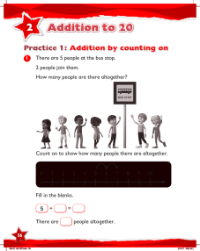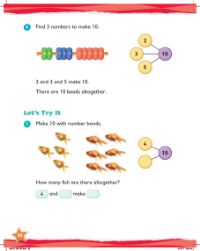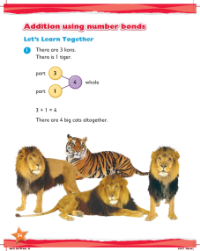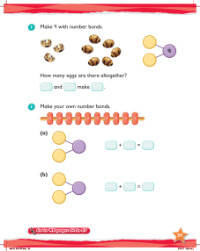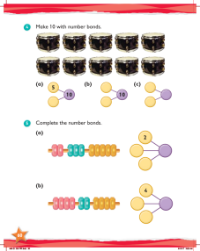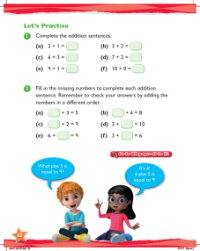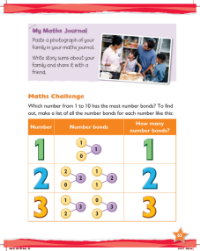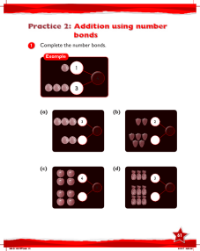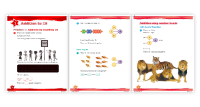Max Maths, Year 1, Try it, Addition using number bonds
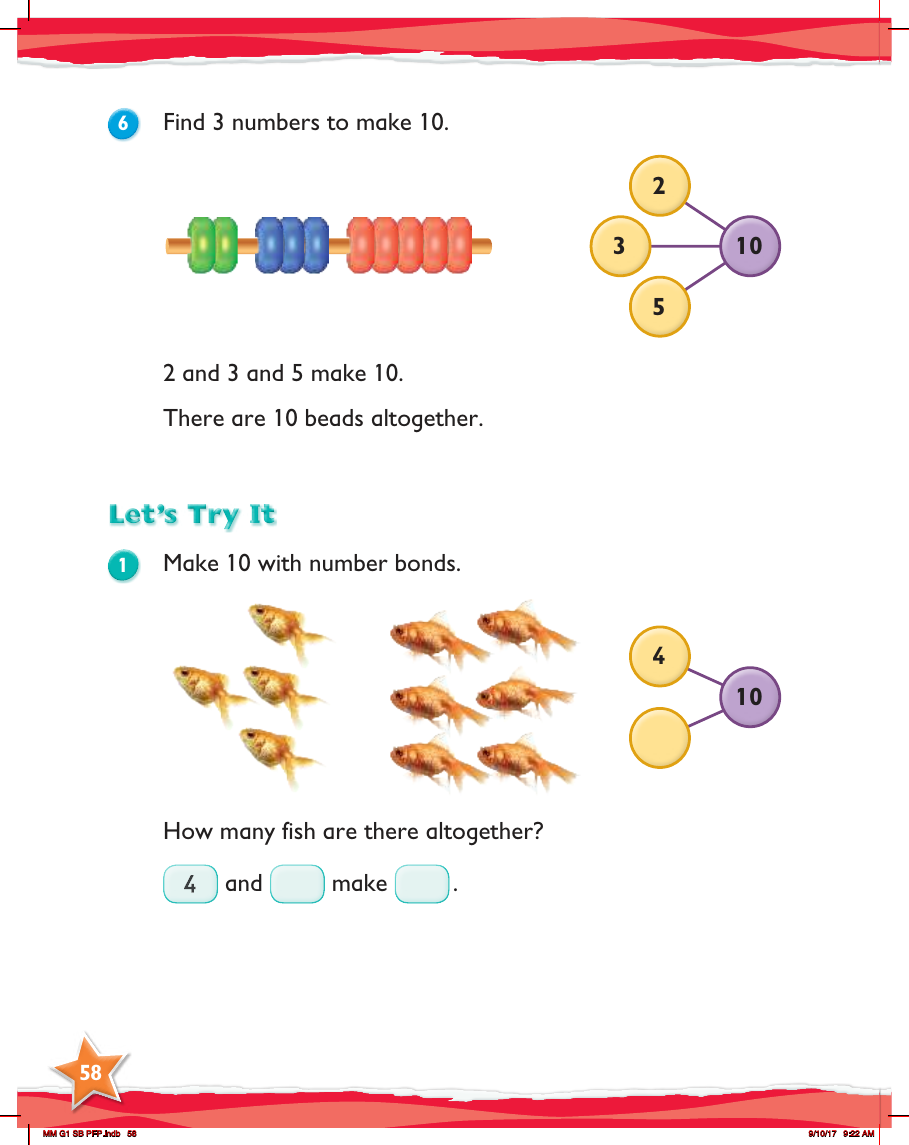
Maths Resource Description
In the 'Max Maths' book for Year 1, a section titled "Try it, Addition using number bonds" presents young learners with a simple and engaging way to understand the concept of making 10 using different number combinations. The exercise begins by challenging the children to find three numbers that, when added together, equal 10. For instance, the numbers 2, 3, and 5 are given as an example. When these numbers are combined (2 + 3 + 5), they sum up to 10, which can be visually represented by a set of 10 beads, reinforcing the idea that these three separate quantities join together to form a whole of ten units.
The "Let's Try It" activity further encourages students to practice their understanding of number bonds by asking them to make 10 with different pairs of numbers. For example, they are presented with the number 4 and are prompted to find another number that, when added to 4, equals 10. This part of the exercise is interactive, with illustrations such as fish to help visualise the addition process. Students are invited to fill in the blanks and discover the missing number that completes the bond, fostering their addition skills and reinforcing their grasp of the concept that two parts can come together to make a whole of ten. This hands-on approach to learning basic addition through number bonds is a cornerstone of early years mathematics education.
